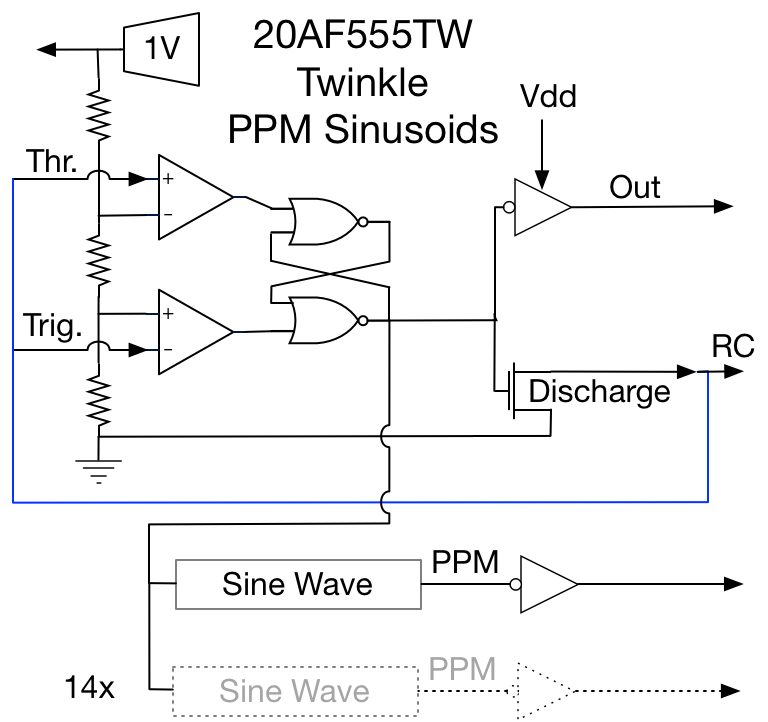This chip builds on a 555 core I developed to incorporate into 20-pin IC designs needing an oscillator or timer. The design thinking behind this core and two other chips that use it are described in another project. Those earlier designs had a balanced number of pins assigned to the 555 core and additional functions. In this design I quickly realized I would have to reduce the number of pins assigned to the 555 core to leave as many as possible to blink LEDs and maximize the bling factor.
The design of the 555 is sufficiently flexible to allow these simplifications without incurring the considerable expense of new IC masks because the choice of pins to make available externally can be made at the die packaging stage and multiple pads on the die can be connected to the same pin. Also, in this application the 555 core is intended as a reliable, tunable oscillator so the reset function is unnecessary.

The final design combines the threshold, trigger and discharge pads into a single "RC" pin. A 1V Band Gap Reference pin is provided to give a reliable source for the charging resistor. The third pin is a buffered output with extra buffering for driving higher current loads. The extra buffering was obtained without mask changes by combining output pads to the same pin.
The 555 core oscillator output is connected internally to the 15 digital sine wave generators which divide the clock by different factors and output waves in digital Pulse Position Modulation (PPM) form.

With an appropriate choice of frequency the LEDs will throb in brightness at different rates. The visual effect is rather calm and soothing and would be useful in Christmas tree ornaments or earrings for a calm gathering.
The adventure doesn't end here though....
Read more » Adrian Freed
Adrian Freed